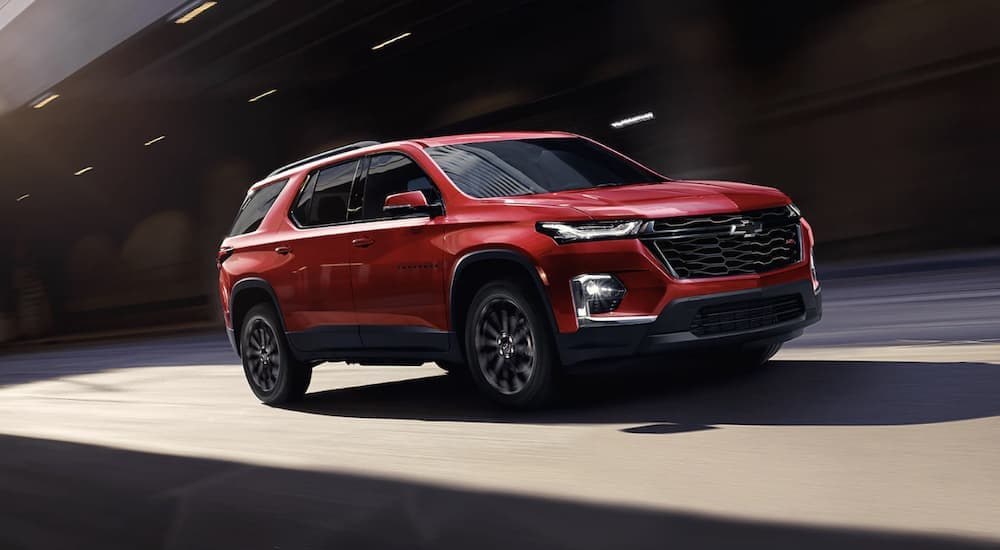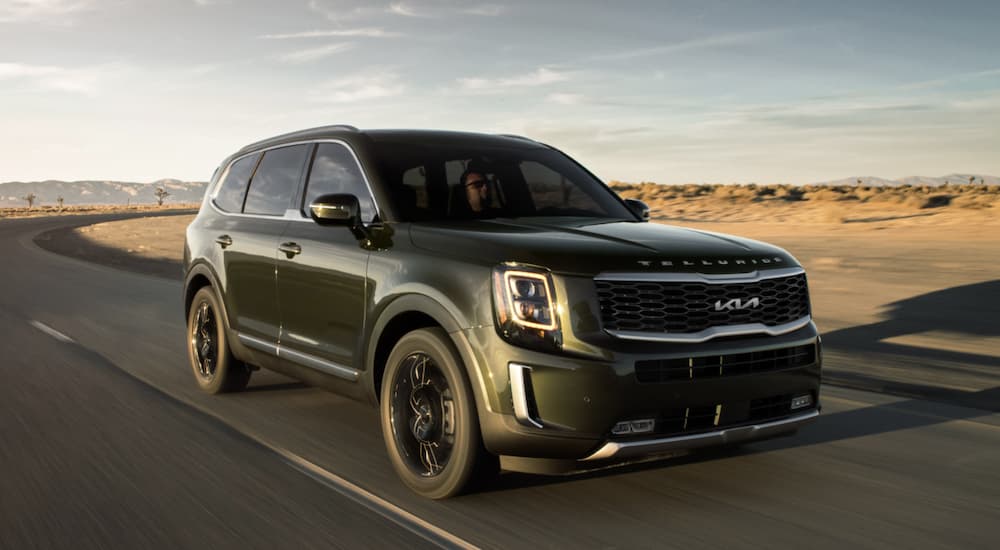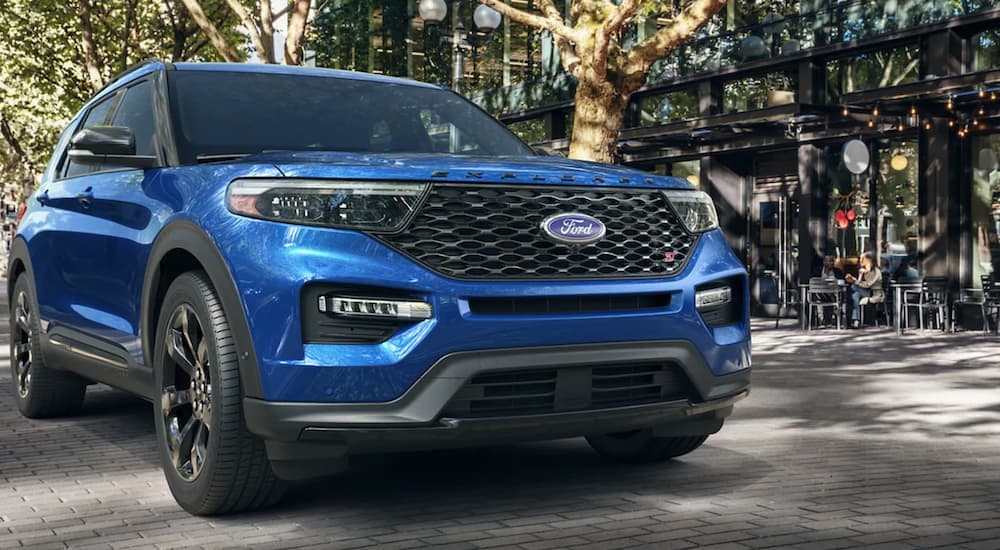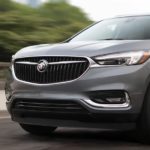It’s no secret that the SUV market has come to dominate the auto industry, making up a huge percentage of vehicles sold every year. You might think it’s strange to consider a Chevrolet dealership a “Chevy Traverse dealer” or “Chevy Equinox dealer,” but the reality of how popular these models are has made it clear that this is where things stand. The upside to this market takeover is that people who like SUVs now have many options available, including a wide range of different sizes, styles, and designs.
Amongst all the varying options, some of my favorites are midsize models: they do an excellent job of living up to their name and falling in the middle of different models. Larger SUVs can be great but are way too much for many drivers, while compact models are perfect for cramped city living but can fall short in functionality. Midsize SUVs give you a “best of both worlds” situation, plus they’re spacious inside and provide your passengers with plenty of room. One design that’s become increasingly popular is a midsize SUV with three rows of passenger seating – coming closer to a full-size model than a compact crossover. Let’s look at some of the most popular three-row midsize SUVs on the market to see what they offer.
The Chevy Traverse
One of the largest options out there when looking at three-row midsize models, the Traverse has become popular. The Traverse has just one engine available, but it’s a 3.6L V6 that delivers 310 hp and 266 lb-ft of torque, making it more than sufficient for what it needs to do. Due to its large size, there’s plenty of room inside for passengers and cargo alike – the Traverse has 23 cu. ft. of cargo space in the rear area, 57.8 cu. ft. of cargo volume behind the second row, and more than 98 cu. ft. of total cargo volume behind the front seats. This midsize SUV is about as big as it gets without moving up to a full-size model.
The GMC Acadia
Although GMC models share platforms with their Chevy cousins, making them nearly identical in many ways, the Acadia is smaller overall than the Traverse. The Acadia gives you less room inside, but its smaller size can make it an easier fit into many people’s lives. The Acadia has two engines available: a 2.0L Turbo I-4 that delivers 228 hp and 258 lb-ft of torque or a 3.6L V6 with 310 hp and 271 lb-ft of torque. Both engines are great, but the I-4 is ideal for anyone looking to get better fuel economy. Due to its smaller size, the GMC Acadia has 12.8 cu. ft. of rear cargo space, 41.7 cu. ft. of cargo volume behind the second row, and 79 cu. ft. of total cargo area to utilize.
The Toyota Highlander
Although the Toyota 4Runner is available with a third row of seats, it makes for a very cramped and unpleasant experience; the Highlander is a better choice for anyone looking for a three-row midsize SUV. The Highlander has a 3.5L V6 engine with 295 hp and 263 lb-ft of torque, making it fun to drive. Inside, the Highlander has 16 cu. ft. of rear cargo space, with about 48 cu. ft. of space behind the second row of seats and 84.3 cu. ft. of total cargo volume available.
The Kia Telluride
Much like Toyota, Kia also has two three-row models like this available; but the small size of the Kia Sorento makes me choose the Telluride as a better overall option. The Kia Telluride has a 3.8L Lambda V6 engine that puts out 291 hp and 262 lb-ft of torque – that’s solid power, and you can see how similar most of the engines are between these various models. Within the Telluride, you’ll find 21 cu. ft. of space in the rear area, with 46 cu. ft. of cargo volume behind the second row, and 87 cu. ft. of total cargo space to use. This makes it one of the most spacious options available, though it still falls well short of what the Chevy Traverse offers.
The Jeep Grand Cherokee L
A couple of years ago, Jeep added a larger version of its popular Grand Cherokee model to its lineup– the Grand Cherokee L, a three-row option with undeniable Jeep styling. You’ll find two engines: a 3.6L Pentastar V6 with 290 hp and 257 lb-ft of torque or a very impressive 5.7L HEMI V8 engine with 357 hp and 390 lb-ft of torque. The HEMI option makes this one of the most powerful three-row midsize SUVs on the road, though the Pentastar is the choice for drivers looking for better fuel efficiency. Inside, the Grand Cherokee L has just 17.2 cu. ft. of rear cargo space, with about 47 cu. ft. of cargo area behind the second row, and just over 84 cu. ft. of total cargo volume; I should note it’s notorious for very cramped rear seating.
The Nissan Pathfinder
The Nissan Pathfinder is a solid overall option and one of the most popular models in Nissan’s lineup. It is powered by a 3.5L V6 engine that delivers 284 hp and 259 lb-ft of torque, which isn’t much compared to the following options from Ford and Dodge, but it’s just as good as many others. The Pathfinder is an adventurous and sporty option, particularly with available All-Wheel Drive, and it has more than 16 cu. ft. of rear cargo space, 45 cu. ft. of cargo area behind the second row, and 80.5 cu. ft. of total cargo volume inside.
The Ford Explorer
One of the most popular options on the road, the Ford Explorer has more engines to choose from than nearly any other model. There’s a standard 2.3L EcoBoost Turbo I-4 engine with 300 hp and 310 lb-ft of torque, or an available 3.0L EcoBoost Turbo V6 that pushes that up to 400 hp and 415 lb-ft of torque, making it one of the most powerful models out there. What’s particularly nice about the Explorer is its available 3.3L V6 Hybrid engine with 318 hp, 322 lb-ft of torque, and an estimated 27 MPG combined fuel efficiency. Inside the Explorer, there’s just over 18 cu. ft. of rear cargo space, about 48 cu. ft. of cargo volume behind the second row, and nearly 88 cu. ft. of total cargo volume to utilize.
The Dodge Durango
One of my favorite options simply because it’s so unlike many others, the Durango might seem out of place in Dodge’s lineup of muscle cars at first, but it earns that position. Three engines are available: a standard 3.6L Pentastar V6 with 295 hp and 260 lb-ft of torque, a 5.7L HEMI V8 with 360 hp and 390 lb-ft of torque, or a 6.4L HEMI V8 with 475 hp and 470 lb-ft of torque. This is incredible power in a midsize SUV and makes it something unique compared to similar models on the road.
Inside the Durango, there are just over 17 cu. ft. of rear cargo space, about 43 cu. ft. of cargo volume behind the second row, and more than 85 cu. ft. of total cargo volume. The Dodge Durango and the other impressive models we looked at showcase the wide variety of options and innovation that manufacturers have made available within what seems like a middle-of-the-road class of vehicles. This is the perfect demonstration that no vehicle needs to be boring as long as car makers put in the effort to make something special.






